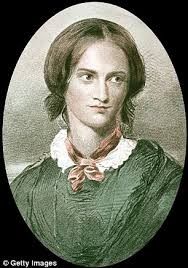Wuthering Heights, a captivating novel penned by Emily Bronte, is renowned for its unique narrative structure and compelling characters. The story unfolds through the eyes of two narrators, Lockwood and Nelly Dean. Lockwood, an outsider, plays a pivotal role in framing the novel’s structure, while Nelly Dean provides intricate accounts of the characters’ personal lives.

Bronte’s writing style adds a complex and dramatic element to the story by alternating between the two narrators. Notably, Nelly Dean’s narrative is more emotionally charged and vividly portrayed. Immersed in the intimate affairs of the rival families, the Lintons and the Earnshaws, Nelly becomes an essential conduit in showcasing their conflicts and complex personalities.
The characters in Wuthering Heights are portrayed with distinct emotions and styles. Bronte masterfully explores relationships and romance, evident in the love triangle between Catherine, Edgar, and Heathcliff, and later with Little Cathy and Linton. The struggle between social classes is a central theme that motivates and drives the characters’ actions throughout the novel.
Bronte’s writing style in Wuthering Heights marks a departure from prevailing literature of her time. Her earlier poems were filled with serene natural imagery, but in this novel, her language takes on a more animated and vivid tone, particularly in Nelly’s dialogues. Bronte’s eloquent and rhythmical approach captures the hearts of readers, immersing them in the haunting atmosphere of the story.
The contrast between Lockwood’s formal and composed diary entries and Nelly Dean’s passionate and engaging narration showcases Bronte’s ability to balance opposing elements. As Nelly holds the power of character dialogue, she unfolds the shocking history of Wuthering Heights, revealing the story from the ending, a narrative technique that captivates readers and sustains their interest throughout the novel.
By describing the eerie ambience of Wuthering Heights through Lockwood’s first-hand experiences and his encounter with Catherine’s ghost, Bronte creates an intense and atmospheric reading experience. The reader is gradually drawn into the narrative, uncovering the nature of hostility and conflict through Lockwood’s unbiased perspective.
Wuthering Heights Characters
Emily shows that Nelly at times encourages relationships and get indulged in romance, which is shown with the love triangle between Catherine, Edgar, and Heathcliff, and later with Little Cathy and Linton.

Emily moves easily into the story with two narrators. The readers focus more on the crucial part of the novel when Emily shows the struggle between the classes. Social class is what drives and motivates the characters in the story.
Wuthering Heights has a distinct writing style in contrast to prevailing literature
Before Emily wrote Wuthering Heights, her poems were full of flowers, mountains, and brooding dudes. But her style of writing in Wuthering Heights varies, her speeches written for Nelly is animated with lively images and vivid descriptions. Bronte’s style conquers many hearts and showed the readers that she had a pretty rhythmical and elegiac approach.
Her striking ability to balance the oppositions can be seen in the novel’s final sentence, where Lockwood observes things while standing at the graves of Catherine, Heathcliff, and Edgar.
One can easily tell that she enjoys her position as a narrator to Lockwood’s listener, thus this sense of power influences her style of writing. Her style of writing from Lockwood’s diary is more formal and composed than of Nelly’s.
Writing Style of Emily Bronte in Wuthering Heights
With Nelly Dean’s narration, the readers discover the shocking history of Wuthering Heights. She operates one thing which Lockwood cannot i.e. the character dialogue. It is quite thought-provoking, how Emily showed that the story begins with the ending.
She pulls her reader in by describing the spooky feeling of the place and allows them to experience it with the first-hand account of Lockwood, when he reads Catherine’s diary and when he sees her ghost.
It creates great intensity which can only be understood the further reading of the novel. Emily allows the reader to understand the nature of the feelings and emotions of hostility and conflict, with the unbiased nature of Lockwood.
In conclusion, Emily Bronte’s writing style in Wuthering Heights is a remarkable blend of emotional depth, vivid imagery, and a unique narrative structure. By skillfully employing multiple narrators, Bronte effectively weaves a haunting and immersive tale of love, revenge, and the enduring impact of human emotions. Her ability to balance contrasting elements and evoke intense feelings in readers solidifies Wuthering Heights as a timeless literary masterpiece.
More Info On- Wuthering Heights Synopsis, Emily Bronte and her Writing Style, Charlotte Bronte and Jane Eyre
